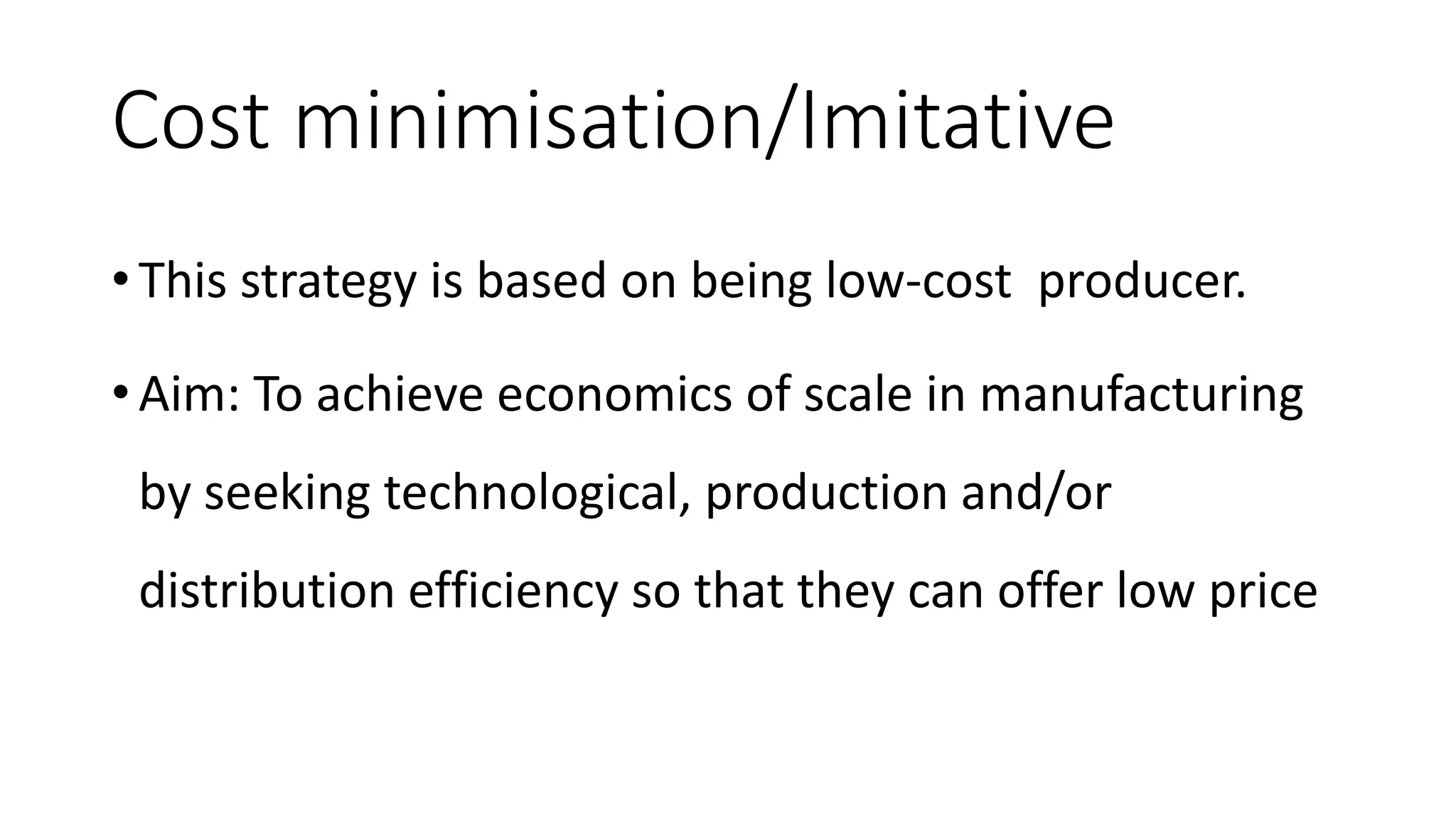This document discusses innovation strategies and technology transfer. It presents four broad innovation strategies that technology-intensive firms commonly use: leader/offensive, fast follower/defensive, cost minimization/imitative, and market segmentation specialist/traditional. It also discusses the differences between closed and open innovation processes. Open innovation involves using both external and internal ideas and paths to market to accelerate innovation. Technology transfer is then presented as an important part of open innovation, with various methods discussed like licensing, science park models, and hiring skilled employees. Limitations and barriers to effective technology transfer are also acknowledged.






































